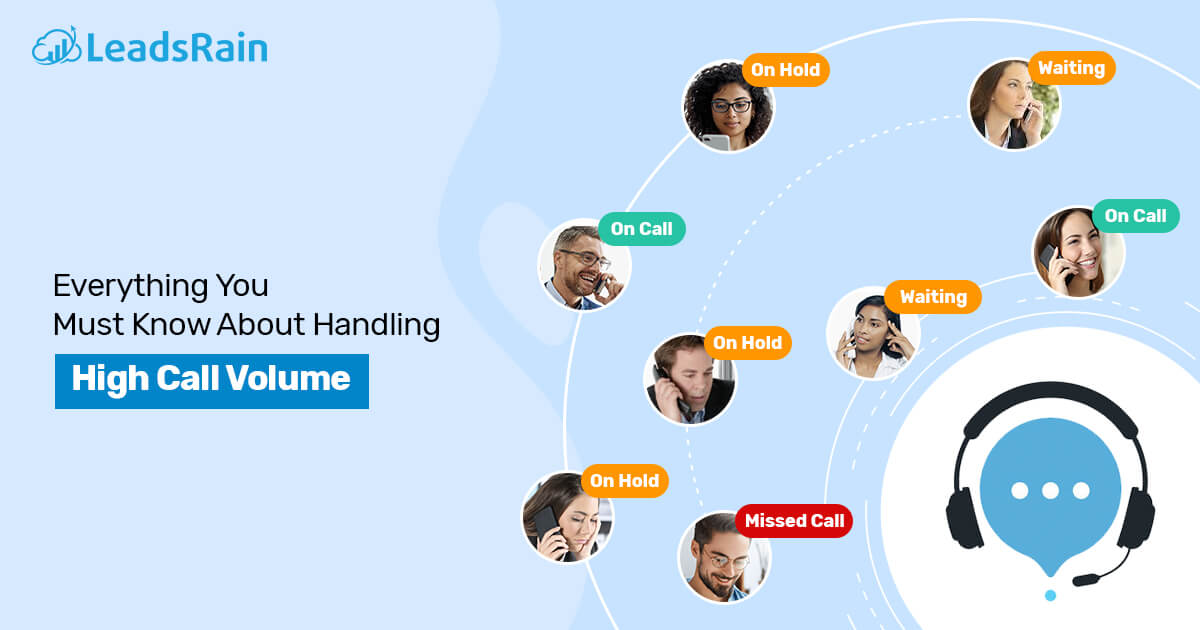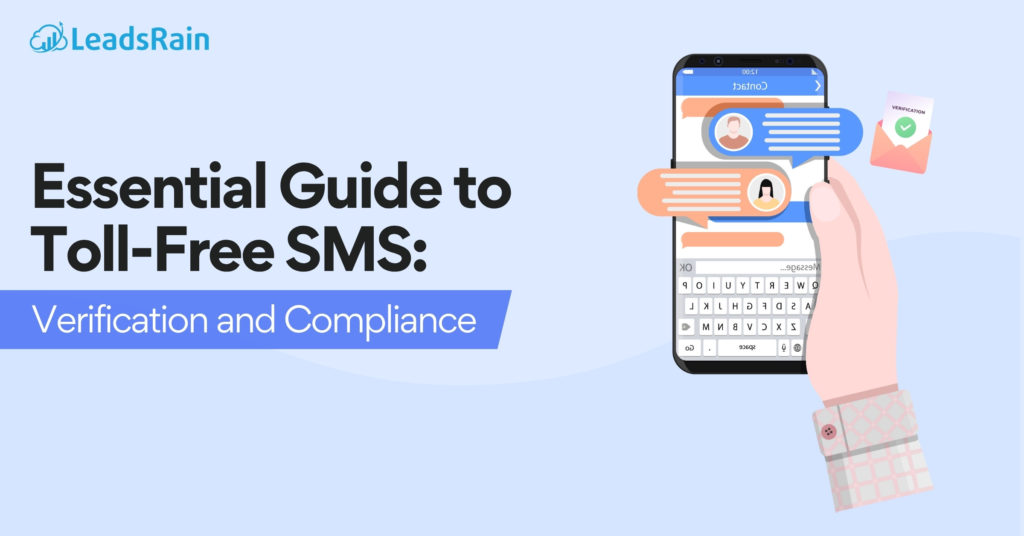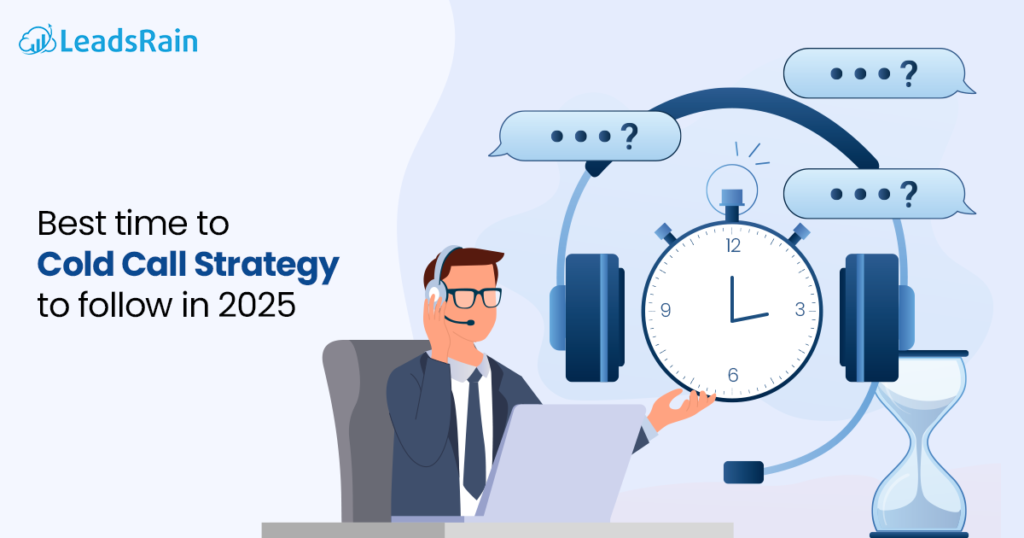Call centers are essential for businesses today. They provide excellent customer service, allowing customers to receive assistance quickly and efficiently. In this blog, we will explore how to handle high call volumes in a contact center effectively.
What is the High Call Volume for a Contact Center?
Ever wondered what happens when a call center experiences high call volume? High call volumes in a contact center are when many calls are handled, usually within a short period.
This refers to a situation where the number of outbound or inbound calls exceeds the usual or expected capacity of the center to handle them. This could be due to a sudden surge in customer inquiries, unexpected events, marketing promotions, or even system outages. It is vital for contact centers to accurately measure call volumes to gain insights into service demand and align their resources accordingly. These measurements often involve analyzing peak periods, average handling times, and call abandonment rates to manage high call volumes effectively.
Why Does a Contact Center Must Have a System to Handle High Call Volume?
Failing to handle heavy call volumes effectively in a contact center can have numerous drawbacks for your business. High call volumes can affect your customers’ satisfaction and have serious consequences for your business.
Let’s discuss some drawbacks of not effectively handling high call volumes in contact centers.
Negative Impact on Customer Retention
Customers with a negative call center experience are likelier to take their business elsewhere. Retaining customers is paramount to the success of any company. If your call center consistently struggles to handle high call volumes, you run the risk of losing valuable customers to competitors who can provide better service.
Decreased Customer Satisfaction
When call volumes soar and customers are left waiting on hold for extended periods, the frustration begins to build. Customers value their time, and their satisfaction with your company declines when they feel that it is being wasted. Unsatisfied customers are likelier to share their negative experiences with others, potentially tarnishing your brand reputation.
Reduced Productivity and Efficiency
Without a proper system to handle high call volumes, contact center agents may feel overwhelmed and stressed, leading to decreased productivity and efficiency, potentially compromising the quality of customer interactions.
Increased Employee Burnout and Turnover Rates
Dealing with heavy call volumes can take a toll on call center agents. Constantly handling frustrated customers, working long hours, and experiencing high-pressure situations can lead to employee burnout and increased turnover rates. High levels of stress and exhaustion can negatively impact the performance of call center agents and their ability to provide excellent customer service.
Missed Opportunities for Upselling or Cross-selling
A high-volume call situation doesn’t have to be entirely negative. It can present an opportunity for call center agents to offer additional products or services to customers. However, these opportunities can be missed if agents are overwhelmed and focused solely on handling the influx of calls.
Increased Abandonment Rates
Long wait times and inefficient call handling can lead to customers giving up and abandoning their calls. This negatively impacts customer satisfaction and results in missed opportunities to address their needs and provide support.
Challenges in Handling High-Call Volumes
Managing heavy call volume is a common challenge faced by many businesses. Handling high call volumes is a complex task that requires careful planning and optimization. So, let’s find out some of the common problems encountered when dealing with high call volumes.
Inadequate Staffing and Resources
Managing high call volumes becomes even more challenging when businesses do not have enough staff to handle the influx of calls. This can result in increased wait times, frustrated customers, and a decline in customer satisfaction. Additionally, if agents are not properly trained and equipped with the necessary knowledge, customer queries and concerns may not be addressed efficiently. Organizations must assess staffing needs and provide adequate training to ensure agents can handle high call volumes effectively.
Long Wait Times and Call Queues
One of the most common problems associated with high call volumes in call centers is long wait times and call queues. When customers are forced to wait for extended periods, it can lead to frustration and dissatisfaction. To alleviate this issue, businesses can consider implementing strategies such as offering callback options.
Inefficient call routing and distribution
A crucial aspect of handling high call volumes is an effective call-routing system. Ensuring that calls are routed to the most appropriate agent reduces transfer rates and improves first-call resolution. Businesses can enhance overall performance and customer satisfaction by introducing a contemporary call center software system for optimized call distribution.
Lack of Tracking and Analytics
Organizations may miss valuable insights regarding their call-handling performance without proper tracking and analytics. Identifying areas that need improvement, monitoring agent productivity, or measuring customer satisfaction becomes challenging. The call center’s Auto-dialer system must have strong tracking and analytical features.
Burnout among Agents
Handling high call volume can emotionally drain agents, leading to burnout. The constant pressure to perform, deal with irate callers, and adhere to strict metrics can take a toll on their well-being. A system within the call center must explain how to handle call center burnout or, rather, avoid it. This can include regular breaks, offering mental health resources, and fostering a positive work environment.
How to Handle High Call Volume in Call Center?
Handling a heavy call volume in a contact center can be demanding, but with the right tools and systems, businesses can provide exceptional customer service while optimizing their call-handling processes.
1. Interactive Voice Response
An IVR system is a telephony technology that allows callers to interact with a computerized voice prompt menu. This system can effectively handle a high volume of incoming calls by directing callers to the appropriate departments or providing them with pre-recorded information. IVR systems improve call efficiency and enhance the overall customer experience.
2. Automatic Call Distribution
ACD systems are designed to automatically distribute incoming calls to the most appropriate agent or team based on predetermined criteria such as caller’s language preference, issue complexity, or agent availability. This smart call routing method ensures callers are connected to the right person, reducing wait times and increasing first-call resolution rates.
3. Call Queuing and Callback System
Call queuing is a system that allows callers to wait in a virtual queue until an agent becomes available. To enhance customer experience and minimize wait times, businesses can integrate a callback system with their call queuing. This feature enables callers to request a callback conveniently, reducing frustration and optimizing call handling.
4. Call Monitoring and Analytics
Businesses need insights into call patterns, agent performance, and customer feedback to handle high call volumes effectively. Call monitoring and analytics tools provide real-time monitoring of calls, recording features for quality assurance, and comprehensive analytical reports. These systems help businesses identify areas for improvement and optimize call-handling processes.
5. Voice Over Internet Protocol
VoIP systems utilize internet technology to transmit voice calls, providing flexibility and scalability for handling high call volumes. By adopting a VoIP system, businesses can easily add or remove phone lines, enable call forwarding, implement call routing rules, and integrate with other communication channels.
6. Knowledge base and Self-service options
Businesses can implement knowledge bases and self-help resources to reduce call volume and increase self-service opportunities. By providing frequently asked questions, troubleshooting guides, and tutorials online, customers can find answers to common inquiries without the need to call support teams. This allows businesses to handle high call volumes effectively and empowers customers to solve their issues.
Predictive Dialer Software – Ultimate Solution for High Call Volume
Managing high call volumes efficiently is crucial for maintaining customer satisfaction and ensuring smooth operations. This is where predictive dialer software comes into play. With its advanced automation capabilities, the cloud predictive dialer not only simplifies outbound calling processes but also offers a range of benefits to businesses of all sizes. Investing in a predictive dialer is smart for any business looking to streamline its outbound calling processes and gain a competitive edge in today’s customer-centric market.
Benefits of Predictive Dialer for Handling High Call Volume
Implementing a predictive dialer can bring numerous benefits. Let’s look at the benefits of using a predictive dialer for handling high call volumes.
Increased agent productivity
- A predictive dialer enables agents to make more calls in less time by automating the call-dialing process.
- The software eliminates the need for manual dialing, reducing idle time and increasing agent productivity.
- With features like call monitoring and call recording, agents can also evaluate and improve their performance, leading to enhanced productivity.
Efficient call routing
- A predictive dialer uses algorithms to analyze various factors such as agent availability, call history and call data to determine the best time to connect an agent with a call.
- This ensures that agents are only connected with live calls, eliminating the need to handle voicemails or disconnected numbers.
- By efficiently routing calls, the predictive dialer reduces agent idle time, increasing efficiency and improved customer service.
Optimal time management
- Predictive dialer allows businesses to schedule call campaigns strategically based on customer preferences and peak call times.
- Businesses can maximize their chances of connecting with customers and achieving higher conversion rates by automating dialing numbers at the right time.
- This feature also enables businesses to allocate their resources effectively, ensuring that agents are available during the busiest call periods.
Enhanced customer experience
- Predictive dialer lets businesses personalize customer interactions by giving agents easy access to customer information.
- This allows agents to have meaningful conversations with customers, addressing their specific needs and providing accurate information.
- With features like call scripting, agents can follow a predefined script, ensuring a consistent and professional approach with every customer interaction.
Scalability and cost savings
- Predictive dialer software is highly scalable, making it suitable for businesses with varying call volumes.
- As call volumes increase, predictive dialers can easily accommodate the demand by automatically adjusting the dialing rate and allocating more agents.
- Predictive dialer helps businesses reduce manual dialing and idle time costs by streamlining operations and maximizing agent efficiency.
Conclusion
High call volumes can be a challenge for contact centers. By preparing for the influx of calls, utilizing the right technology, and training agents to provide the best customer service, call centers can ensure their customers receive the excellent customer service they deserve. But there’s a Solution for High Call Volume. So why not unleash the power of Predictive Dialer Software?
Talk to our expert now and eliminate the challenges of handling high call volumes, or you can write us at support@leadsrain.com.




